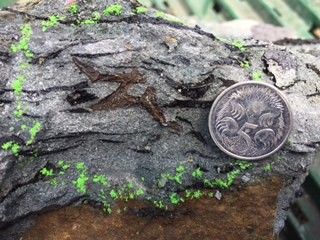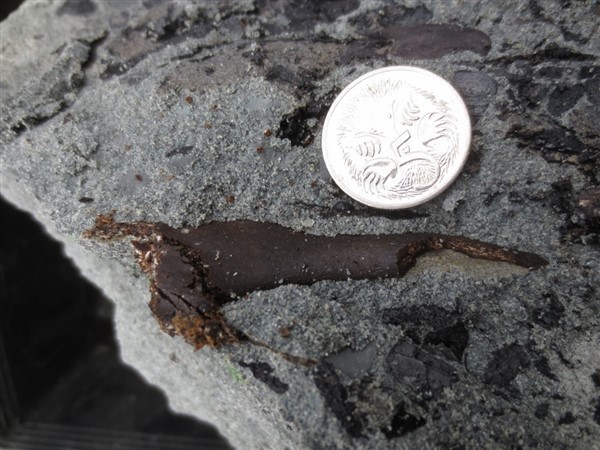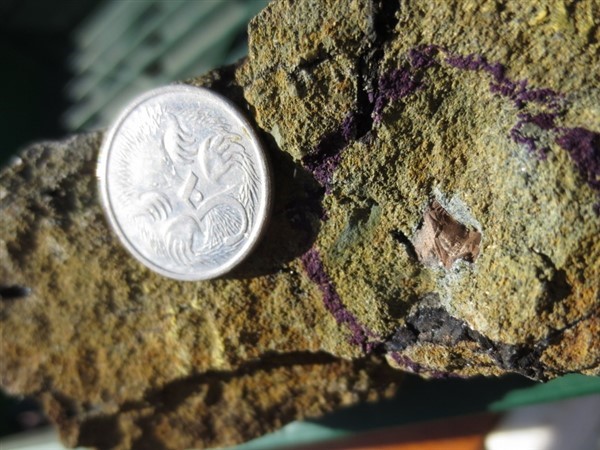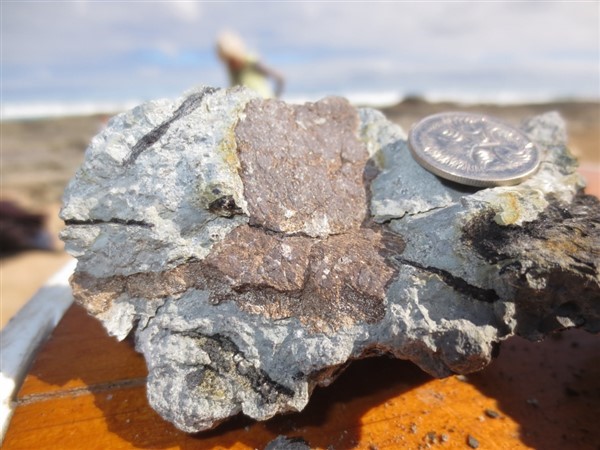Eric The Red West 2016 week 2
Dinosaur Dreaming at Eric the Red West 2016
Week 2 - 13th - 20th February
After a successful first week at the Eric the Red West site, the Dinosaur Dreaming team were hoping to continue their good fortune in week 2. Approximately half the crew departed at the end of week one, to be replaced by a similar number of fresh, enthusiastic volunteers, ready to make their mark.
On Sunday 14th February Dinosaur Dreaming's chief prospector, Mike Cleeland took a couple of crew members on a short trip to Skene's Creek, a small coastal town north of Apollo Bay. The rocky shore platform along this part of the Otway Coast is known for the discovery of a number of small dinosaur tracks in the 1980s. The tracks were made by a small ornithopod dinosaur and were preserved in the ripple marked sandstone, which outcrops in this area. Eagle-eyed Mike decided to re-visit the area to see if any new tracks had become exposed and true to his form, he found some. The new tracks were larger than the previous tracks and images of them were sent to our Dinosaur Dreaming fossil trackways expert, Tony Martin in Altanta, Georgia. Tony has identified a number of Cretaceous fossil trackways in Victoria and was quick to identify these new tracks as belonging to a theropod (meat-eating) dinosaur, which had a foot length around 30cm.
If this news wasn't exciting enough, back at the Eric the Red West site, the Dinosaur Dreaming crew unearthed a cluster of dinosaur bones, which dig palaeontologist Steve Poropat tentatively identified as being similar to those of the Winton theropod dinosaur - Australovenator wintonensis.
In an email, Dr Tom Rich, leading researcher on the Eric the Red West dig, describes the discovery:
"What is being encountered is an area where bones as large as the dinosaur that bore 'The Claw' have turned up. In previous years, with the exception of 'The Claw' itself, the dinosaur bones found at Eric the Red West were of much smaller dinosaurs, typically the small, bipedal herbivorous hypsilphodontids or euornithopods that in physical appearance resemble potoroos. These larger bones, like 'The Claw', appear for the most part to be those of theropods or carnivorous dinosaurs. This cluster of bones comes from about 6 metres away from where 'The Claw' was found in 2014.
"If these theropod bones prove to be congeneric with Australovenator from Queensland where the holotype was found as 'The Claw', the Victorian material may supplement the Queensland holotype. This is because the holotype is not complete, lacking amongst other things, vertebrae. Amongst the specimens found thus far are a couple of theropod vertebrae that are certainly candidates to possibly belong to Australovenator."
As Tom points out, the discovery of theropod dinosaur bones at the site is rare and to find a cluster of them suggests that they may have originated from the same dinosaur. These bones will be given priority preparation when they are returned to Museum Victoria at the end of the dig and hopefully it won't be too long before their identification is confirmed.
Many more bones were found during week two of the dig, including smaller dinosaur bones, turtle shell fragments and interesting vertebrae. The weather was not as kind as in the first week with one whole day lost to rain, but as the third week gets under way we have our fingers crossed that even more exciting discoveries will be made before the end of the dig.
Stay tuned for week 3 of Dinosaur Dreaming's Eric the Red West dig.
Images: courtesy of Wendy White.

Cross-section through a dinosaur vertebra.
Images: courtesy of Wendy White.

A possible skull fragment.

Cross-section through a dinosaur tooth.

Thick turtle plate.
visits